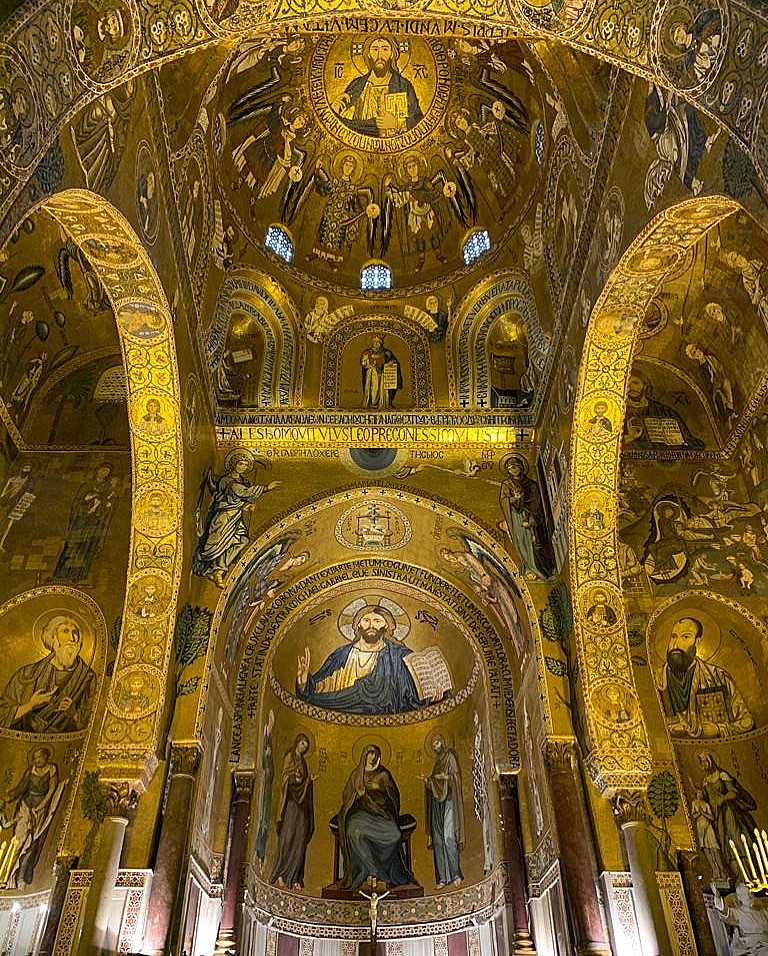
Palermo – The Palatine Chapel
The Palatine Chapel is a basilica located inside the Norman Palace in Palermo. It was commissioned by Roger II of Altavilla, the first Norman king of Sicily. It is a treasure of inestimable beauty, recognized as a UNESCO World Heritage Site.
If the first impression is that of entering a normal Christian church, looking more carefully at its structure is possible to recognize two small churches. To the west you see a Latin church divided by ten columns. To the east (in the presbytery) one recognizes instead a small Eastern Christian church, that is Byzantine, with a square plan surmounted by a hemispherical dome. Even the inscriptions on the walls are both in Latin and Greek. This testifies to the fact that, in this small chapel, at the time of Roger II, the two religious components were counterbalanced and that the rite was “officiated” in both languages.
On the walls you can find wonderful Byzantine mosaics. They are formed by two sheets of glass between which there is a very thin layer of gold.
Unique in the world and of considerable importance and value is the ceiling. It is a ceiling “fatimita a muquarnas” which means stalactites or alveoli. Here you can admire 750 paintings representing the Koranic paradise. There are trees, monsters, peacocks, eagles; men squatting with their legs crossed in the Muslim way, generally in the act of drinking, or hunting. All these scenes belong to Islamic secular iconography, whose images symbolically represented the wish for a happy life after death.
A special mention should be made of the monolithic candelabrum four meters and twenty-six centimeters high placed on the right next to the ambo. Still used today on Easter Sunday, it is divided into five orders and rests on four lions. The lions, which are the symbol of the Normans, bite men and beasts. At the center of the work, Christ, depicted with a beard, immediately stands out. He sits on a cushion and holds a book in his hand. At his feet you can see the figure of a man dressed as an ecclesiastic, probably Roger II, who commissioned the work.
Did you like this curiosity? If you want to discover more secrets, legends and mysteries of Italy, download Secret Maps!
And if you want to listen to something interesting, try the first Travel Podcast Platform. Try Loquis!

